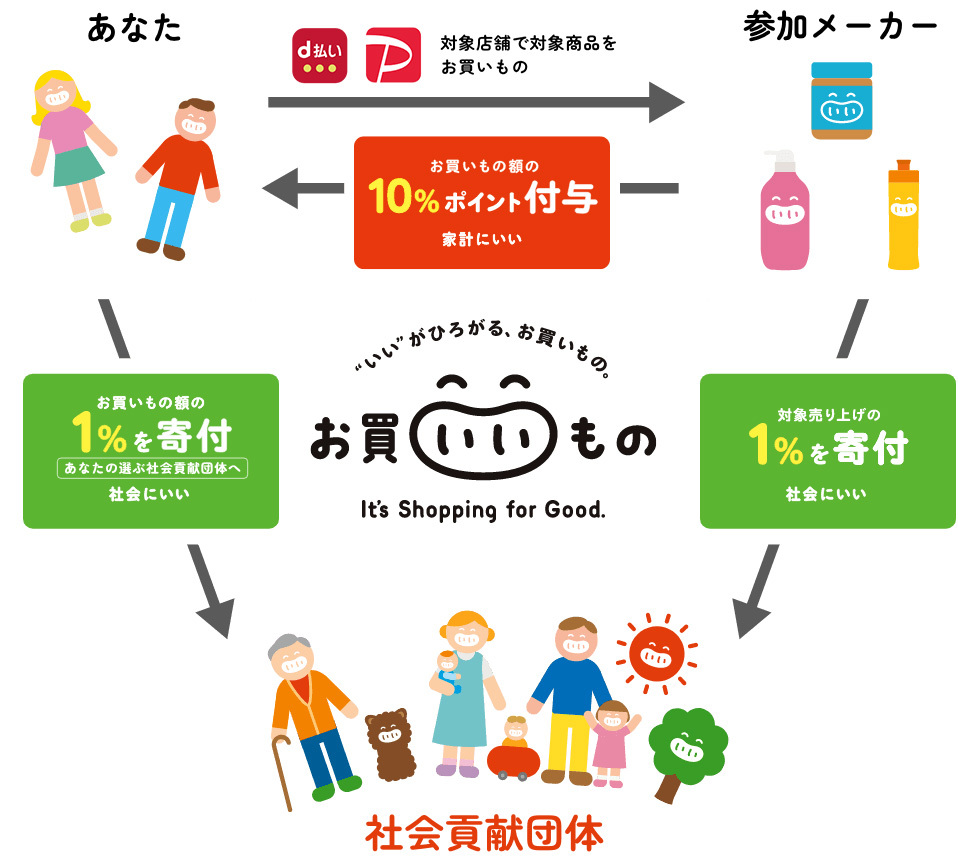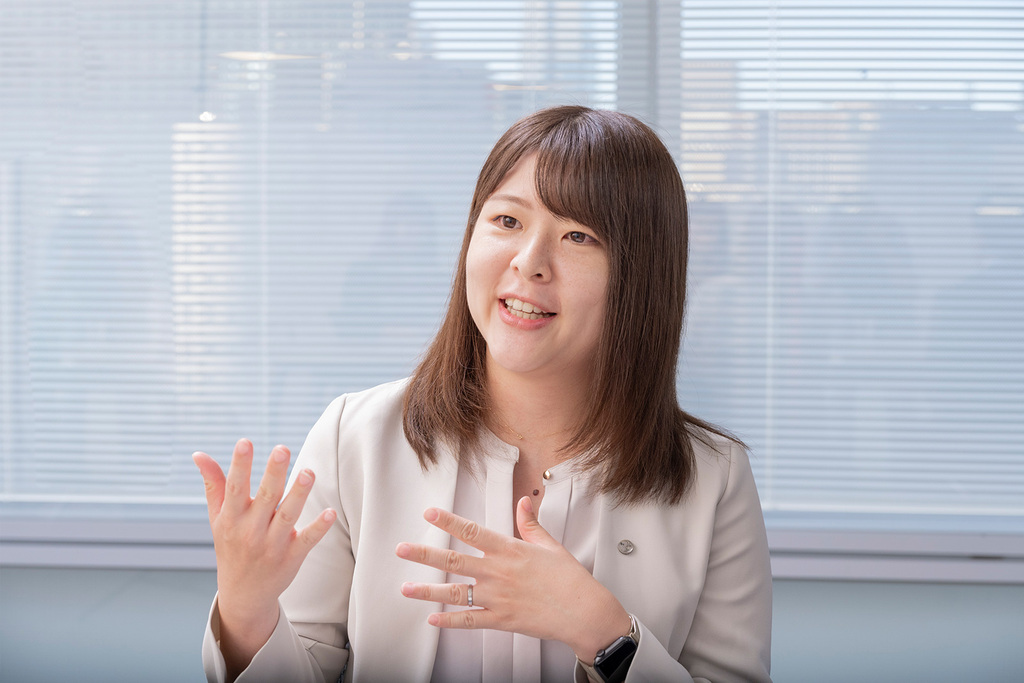Note: This website was automatically translated, so some terms or nuances may not be completely accurate.
Changing society and consumer awareness through shopping. The "Okaimono" Project realized through cross-industry collaboration (Part 1)

Shinya Makino
Kao Group Customer Marketing Co., Ltd.

Ayaka Adachi
Kao Group Customer Marketing Co., Ltd.

Soichi Hara
NTT DOCOMO, Inc.

Kawabata Mai
Dentsu Inc.

Rie Takeshima
Dentsu Inc.
The "It's Shopping for Good." project enables consumers to contribute to solving social issues through their daily shopping. The second phase of this collaborative project, involving manufacturers, payment service providers, and retailers, runs from Friday, September 1, 2023, to Saturday, September 30, 2023.
Last year's first phase saw participation from approximately 300,000 consumers and raised about 11.5 million yen in donations to social contribution organizations, earning the project high praise.In this article, we spoke with Shinya Makino and Ayaka Adachi from Kao Group Customer Marketing Co., Ltd., Soichi Hara from NTT DOCOMO, Inc., and Mai Kawabata from Dentsu Inc., who manages the project, about the background behind its launch and its future goals.The discussion was moderated by Rie Takeshima from Dentsu Inc.'s Sustainability Consulting Office, which supports corporate management from a sustainability perspective. This interview is presented in two parts.
Making "Sustainability" – Often Seen as a High Hurdle – More Accessible

Conscious of transparent social contribution where individuals can choose their own donation recipients


A system that's easy for consumers to participate in, something one company alone couldn't achieve

The "Okaimono" project created a system allowing everyday participation in social contribution activities that might otherwise seem daunting. Last year, approximately 300,000 consumers joined, achieving significant results. To ensure this project isn't just a one-off but becomes a sustainable initiative, what future developments are being considered? In the second part, we'll discuss the vision they aim to achieve through the campaign and their future outlook.
The information published at this time is as follows.
Was this article helpful?
Newsletter registration is here
We select and publish important news every day
For inquiries about this article
Author

Shinya Makino
Kao Group Customer Marketing Co., Ltd.
Trade Marketing Division Digital Marketing Department
Within the Kao Group's sales division, I am engaged in planning and executing digital-driven sales promotion campaigns. By collaborating with retailers and payment providers nationwide to implement initiatives, I am responsible for communicating brand value to consumers and building engagement. For the "Okaimono" campaign, I handled overall planning.

Ayaka Adachi
Kao Group Customer Marketing Co., Ltd.
Trade Marketing Division Digital Marketing Department
Within the Kao Group's sales division, I am engaged in planning and executing digital sales promotion campaigns. By collaborating with retailers and payment providers nationwide to implement initiatives, I am responsible for communicating brand value to consumers and building engagement. For the "Okaimono" campaign, I handled communication-related planning.

Soichi Hara
NTT DOCOMO, Inc.
Smart Life Company Marketing Innovation Department
Manager, Production Promotion Division
While working at a foreign-affiliated manufacturer, I gained experience in corporate environmental initiatives, community support activities, and sustainability efforts as part of corporate responsibility. After joining NTT DOCOMO, Inc., I engaged in marketing support services for businesses through data utilization. To realize DOCOMO's "Carbon Neutral Declaration," I aim to achieve both economic activities and social contribution initiatives in collaboration with partner companies. I promote DOCOMO's "Caboneu" initiative toward carbon neutrality.

Kawabata Mai
Dentsu Inc.
2020 Production Center
After working at Kansai MC Planning Bureau and the 3rd Integrated Solutions Bureau, I am currently responsible for producing the Tokyo Olympic and Paralympic Games at the 2020 Production Center. I also belong to Dentsu Inc. Gal Lab, where I research women's insights daily. ※However, my own feminine charm and voice are on the lower side.

Rie Takeshima
Dentsu Inc.
Sustainability Consulting Office
Executive Planning Director, Dentsu Inc. Team SDGs Project Leader
From strategy formulation to campaign development, and from websites and events to store development, we engage in planning for products and services across diverse sectors including government communications, environment, tourism, regional revitalization, education, beverages, finance, and sports. At Dentsu Inc. Team SDGs, he handles SDGs-related information dissemination and solution development. Alongside sustainability communications, he supports the Dentsu Group's SDGs business solutions, including building circular economies and promoting carbon neutrality. He drives business transformation rooted in sustainability. He frequently speaks at international conferences and contributes articles.



